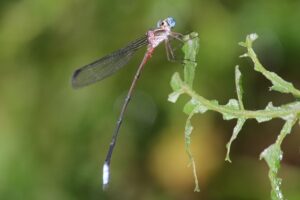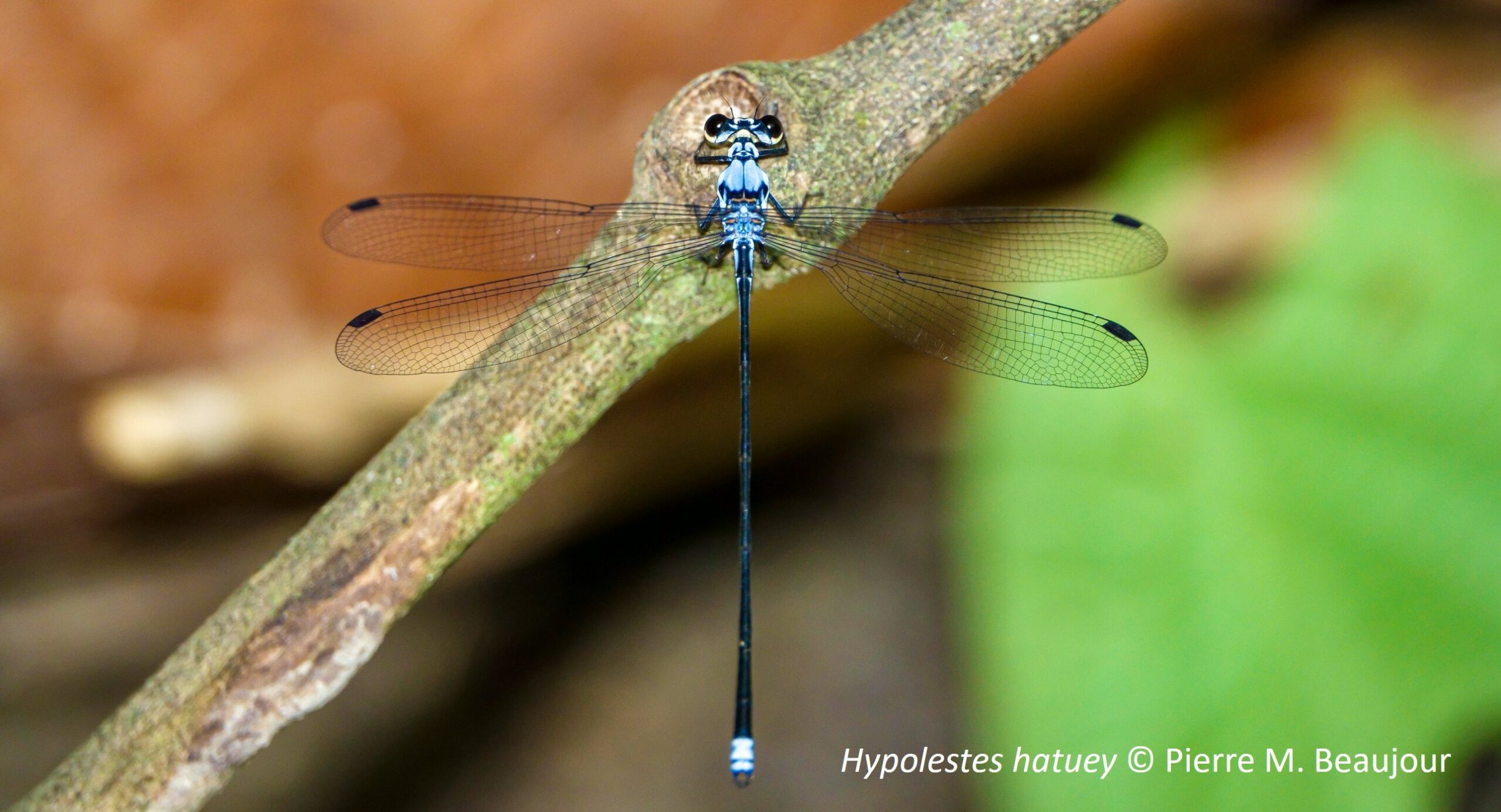Haiti, located on the large island of Hispaniola in the Caribbean, hosts a rich and diverse fauna that is also facing significant threats. The country’s aquatic ecosystems, in particular, are confronted with numerous challenges such as massive deforestation, increasing urbanization, and significant pollution due to limited wastewater and waste treatment capacity. Simultaneously, scientific studies in the field are scarce due to a lack of local expertise, very limited financial resources, and the current climate of violence engulfing the country. To better understand the diversity of aquatic fauna in Haiti, a study focused on a major group of interest: Odonates.
Odonates are a group of insects that include dragonflies and damselflies. The larval stages are tied to aquatic environments, while the flight capabilities of adults allow them to extend their range to terrestrial habitats, including forests. These characteristics make odonates excellent recognized indicators of the quality of both aquatic and adjacent terrestrial environments. Furthermore, odonates play a crucial role in freshwater ecosystems, being significant predators and a source of food as prey, in larval or adult stages, for a wide range of species. In Haiti, 58 odonate species have already been documented in the literature. However, the available data to date are outdated and limited.

A camera was used to help identify certain species.
A recently published study in the international journal Global Ecology and Conservation aims to fill the knowledge gap and open new perspectives. Led by Pierre Michard Beaujour as part of his doctoral research at the Université des Antilles, the study investigated odonates in 67 different sites, covering half of Haiti’s watersheds and encompassing a wide range of sites with contrasting ecological characteristics. The young Haitian researcher visited each of these sites, spending several hours at each location to spot and identify the adult forms of different odonate species based on morphological criteria. He also recorded various variables at each site that could influence the odonate assemblage composition, including water temperature, conductivity, and acidity.
Over a 26-month study period, often interrupted by unfavorable conditions related to violence and the Covid epidemic, a total of 49 species were inventoried, accounting for 84% of the potentially present odonate species in the country. From the collected data, the researcher calculated several mathematical indices used in ecology to account for species richness and taxonomic diversity within odonate communities.
The results indicate that more than two-thirds of the observed species are considered rare, meaning they are present in less than 10% of the sampled water bodies, underscoring the importance of preserving a wide variety of aquatic environments. Additionally, two endemic species of Hispaniola and of conservation interest, Hypolestes hatuey (near-threatened) and Phylolestes ethelae (endangered), were observed during the study, but exclusively at very high altitudes (> 1000m).

Phylolestes ethelae © Pierre M. Beaujour
The findings also demonstrate that various environmental factors influence species richness, i.e., the number of different species present at a site. Flowing water systems, such as rivers and streams, exhibited higher richness and greater taxonomic diversity than stagnant water bodies. Furthermore, these indices’ values were also higher in ecosystems populated by natural vegetation, while the presence of anthropogenic plants associated with agriculture was linked to lower richness and diversity.
This study, the first to document variations in odonate assemblage composition in Haiti on a large scale, provides unprecedented and crucial insights for their conservation in the country. On a more fundamental level, the study tends to confirm that measuring site or species contributions to global diversity does not, contrary to common assumptions, identify priority conservation areas.
Overall, the study highlights the importance of conserving diverse water bodies, especially in forested areas at altitudes exceeding 1000 meters, to preserve odonate diversity in Haiti. In a country where aquatic environments hold significant agricultural value, and where pollution, particularly due to untreated wastewater, is substantial, this study marks a critical first step toward implementing a broader monitoring program focused on the conservation of these key indicators of aquatic ecosystem health in Haiti.
About the Author
Born in Haiti, Pierre Michard Beaujour initially focused on the diversity of pollinating insects in Port-au-Prince during his Master’s internship, funded by Caribaea Initiative. Subsequently, he dedicated his doctoral thesis to odonates in Haiti, with the support of the association. He successfully defended his thesis in December 2023.
Reference
Beaujour, P.M., Loranger-Merciris, G. & Cézilly, F. (2024). Sites and species contribution to the β-diversity of Odonata assemblages in Haiti: Implications for conservation. Global Ecology and Conservation 50: e02816.

